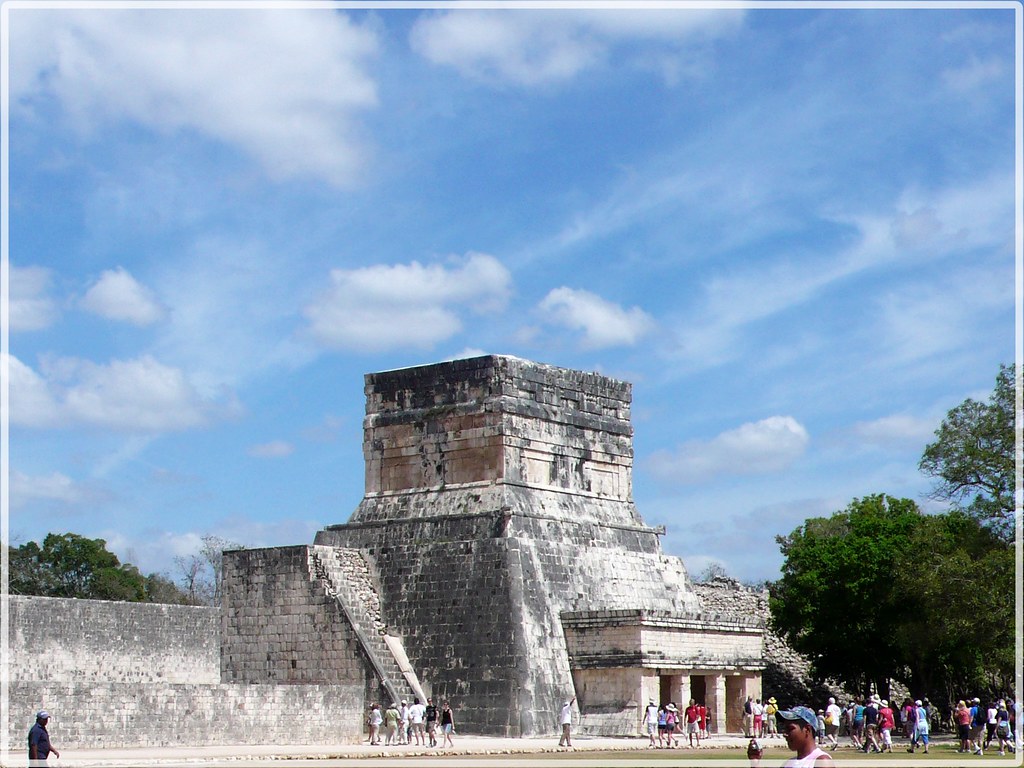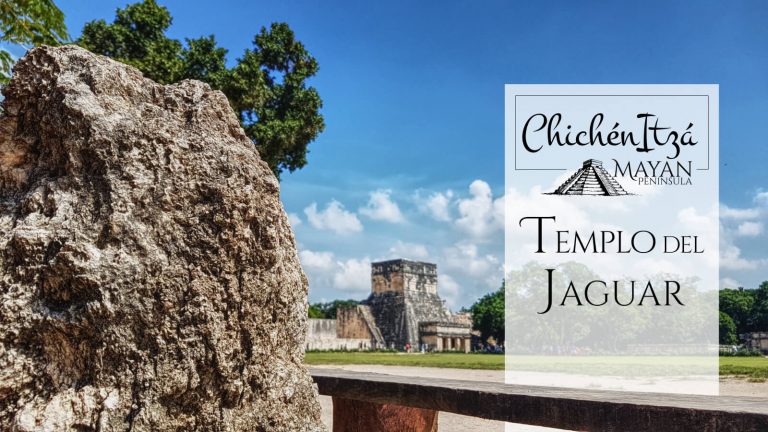The Temple of the Jaguar Chichén Itzá is located at one end of the Central Plaza of Chichén Itzá, towards the east side. In its structure different types of images are sculpted, which generally, can be interpreted as part of the history of the creation of Chichén Itzá.
Table of Contents

History of Chichen Itza
It is one of the main archaeological sites of the Yucatan Peninsula in Mexico; it was a city or ceremonial center, which went through different construction periods and influences of the different peoples who inhabited it and who promoted it from its foundation.
According to the available evidence, it has been discovered that many of the main constructions of the city were destroyed and rebuilt later; where experts conclude that the decline of Chichén Itzá, was given in a context of violence.
The buildings of Chichén Itzá show a great number of varied architectural and iconographic elements, which many historians have wanted to call “Mexicanized”; what is true, and what is visible, is the influence of the different cultures coming from the high zone of the Yucatán peninsula.
However, there was a recent study that suggests that they may have been cultural expressions of a widespread and highly prestigious political system during the early postclassic throughout Mesoamerica.
Importance of the Temple of the Jaguar Chichen Itzá
Chichen Itza was a Maya city of great importance, its archaeological site is the best preserved to this day in the Yucatan Peninsula; it had the presence of very significant sculptures and reliefs that made known the cult of the God, which the Maya called Kukulkan.
It is located to the east of the Great Ball Court. In spite of being small, it is one of the most remarkable temples of Chichén Itzá; this is because its architectural design is one of the most characteristic of the city, thanks to its rich and complex decoration associated to the rite of the game.
The Temple of the Jaguar Chichén Itzá, was used for different ceremonies and rituals; also, it is the main construction of one of the largest cities of the Mayan culture. Today, this Mayan construction has been declared a World Heritage Site by UNESCO since 1988.
In 2007, Chichen Itza was elected, with more than 100 million votes, as one of the 7 wonders of the modern world; because it houses an infinity of ancient Mayan wonders and objects, which to this day are still almost perfectly preserved.
The Temple of the Jaguar
The Jaguar Temple was built between the years 1,000 and 1,150 A.D.; its name is due to a sequence of jaguars that is located in the front part of the structure. The structure consists of different layers, which are intricately carved and show different types of images.
In the entrance hall of the temple, there are columns of two gigantic feathered serpents; while the walls in the interiors were richly formed of stones, the ceilings were completely covered with drawings and paintings depicting human figures, battles, houses, and different scenes.
To construct this building, they had to make a long stairway coming from the eastern platform of the Great Ball Court; as well as a small structure at the southern end, which were built after the North and South Temples.
To reach the upper part, which consists of at least about 10 meters high, they made a staircase, which unlike some others, is narrow and is attached to its south side; also, this part is supported by solid pillars previously mentioned, shaped like a snake.
The front of the building contains walls that are decorated with warriors and references to the man-bird-serpent; also, with three hollows that are formed by two pilasters that show figures of warriors and panels that represent the god Kukultán; as the lord of the earth and all vegetation.

Latest news of Chichen Itza and the Temple of the Jaguar
Archaeologists revealed information about the discovery of a subway sanctuary in the Mayan ruins of Chichen Itza. This finding consists of a Mayan ritual cave that was named Balamkú, “the cave of the jaguar” from the Temple of the Jaguar at Chichen Itza.
It is located 2.7 km east of the Temple of the God Kukulcan; its route is really amazing and it is approximately 24 meters deep below the surface.
The details were released by Pedro Francisco Sánchez Nava, the national coordinator of Archaeology and Guillermo de Anda, who is the director of the “Great Mayan Aquifer” project. The discovery is of great importance because of the amount of relics that are intact and that were part of many Mayan rituals celebrated more than a millennium ago.
Some of the details that were provided state that almost 200 censers, vessels and bones of different animals were found in the cave; the hypothesis that has been considered so far is that they belong to the Late Classic period; between 700-800 years A.D. and the Terminal Classic period, between 800-1000 years A.D.
Conclusion
Among all the places to visit on your trip to the Mexican Caribbean, do not hesitate to add Chichen Itza to your list and if you still do not know how to get there, do not worry and book your private transfer to Chichen Itza with us right now.
